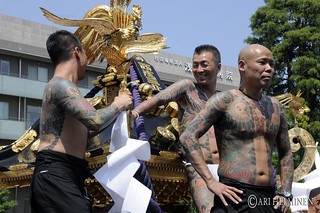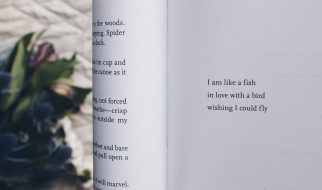 Photo by Ari Helminem
Photo by Ari Helminem
When we talk about Japan, we think about concepts like peace, calm, relaxation, good manners, and a long etcetera that would be the opposite of war or violence. There will be people who will think about beautiful cherry trees, beauty of geishas, incredible landscapes and of course about their famous cuisine. Im sure you ve eaten sushi in the last month. However, there is also a mafia called Yakuza, which is one of the most feared worldwide due to its determination and elegance in the execution of its crimes. High artistic tattoos are another of its typical hallmarks.
Origin:
First of all we must say that some theories attribute the word Yakuza to the worst numbers that you can receive a hand in a card game. The number 8 (Ya), the 9 (Ku) and the 3 (Za). Secondly, we must go back to the Pre Edo Period, which is understood as the pre-Edo stage (1603?1808) in which an emperor decided to punish those who had done a tattoo on their face, categorizing them as traitors, since Japanese culture is characterized for the cleanliness and transparency of its people. In fact, it is at this time that criminals were punished by creating a circle in their arm. Subsequently, the use of ink in the body among the lowest caste of society was extended as a feeling of belonging to a group, even if it was a marginalized group. Years later, already entering the Edo period, people began to decorate their criminal brands with more ornamental motifs, giving them more beauty, thus extending this fashion even in people without criminal records. After the banning of the Samurai, they began working at the service of criminal gangs, creating the Yakuza. In this way, the use of tattoos, as in other types of mafias, is interpreted as a symbol of loyalty to bosses and marks a status within the group.
Characteristics:
Formerly they used to present black as the main color, with various games of shadows and tones. Subsequently, bright colors such as red, white and green were integrated. They are usually large (predominantly those that cover the entire back) and in most cases, performed on those parts of the body that are not visible when dressed, thus respecting the humility that characterizes their culture. In the Munewari style, the drawing covers the arms and chest, but leaves the sternum free. In this way, when they wear the Kimono, the tattoo is not visible. The symbols most used by them are samurai, geisha, cherry blossoms and animals such as Koi fish, dragons, tigers and snakes. Despite the great beauty of some, they are still rejected by the majority of society, and the entry of those who carry them in some public toilets is prohibited.
Meanings:
Koi fish in red: Strength, courage, masculinity and effort.
Sword: Knowledge and power.
White snakes: Good luck and immortality.
Cherry blossoms: Beauty and transience of life.
Flames of fire: Cleaning of negative energies.
Three-clawed dragons (the Chinese have 4 or 5): Control over water, sea and air. Good luck and balance.
Rock and bamboo: Resistance.
Tiger: Power, passion and strength.
Hannya Masks: They symbolize the monster that we all carry inside.
Fudo Myoo: He is the protector of hell and the king of knowledge.
Tamatori Hime: Greed
Samurai: Loyalty to the boss, ferocity and sacrifice.
Ogre Oni: Demon in charge of taking souls to hell, ferocity and bravery.

